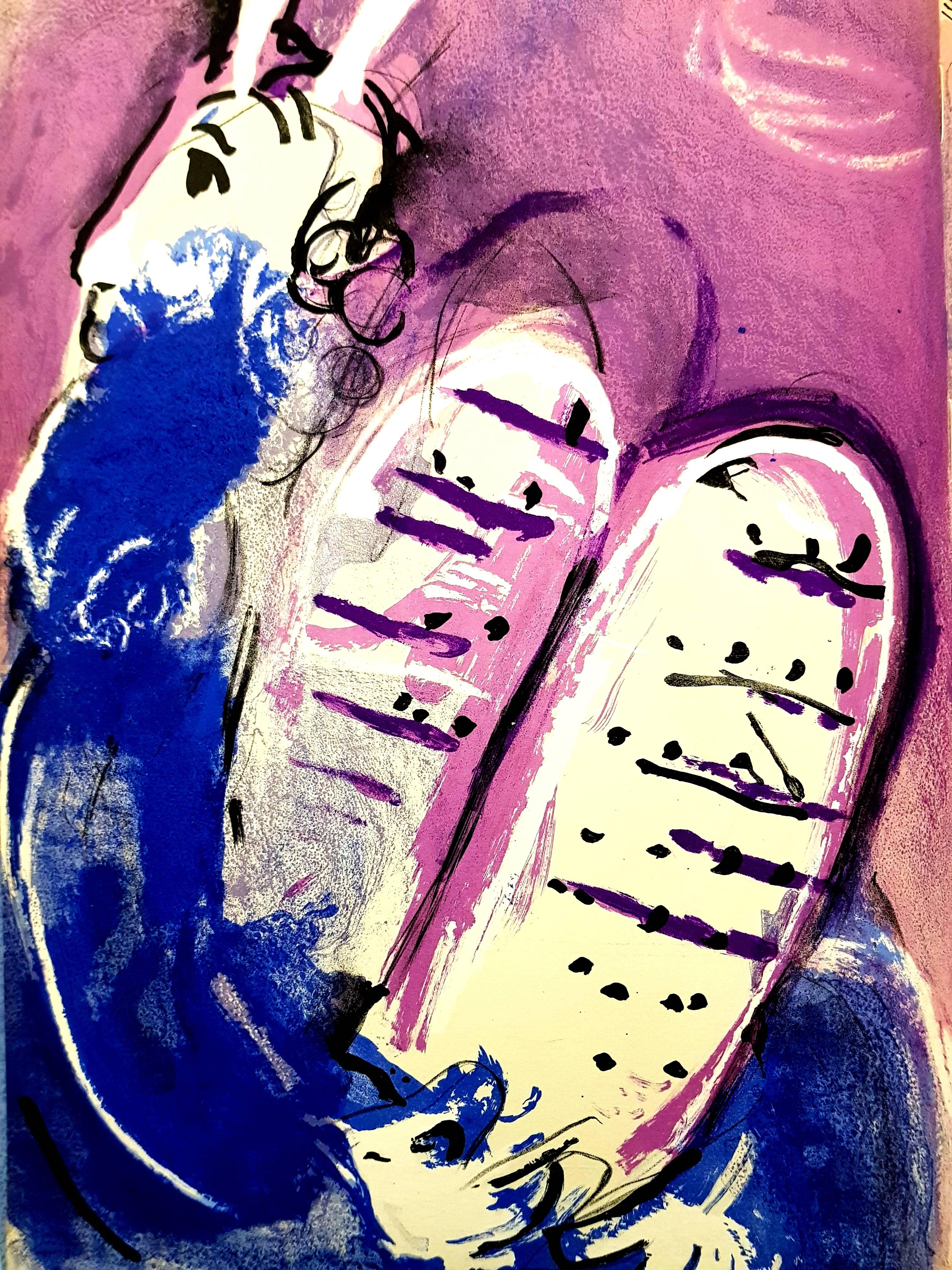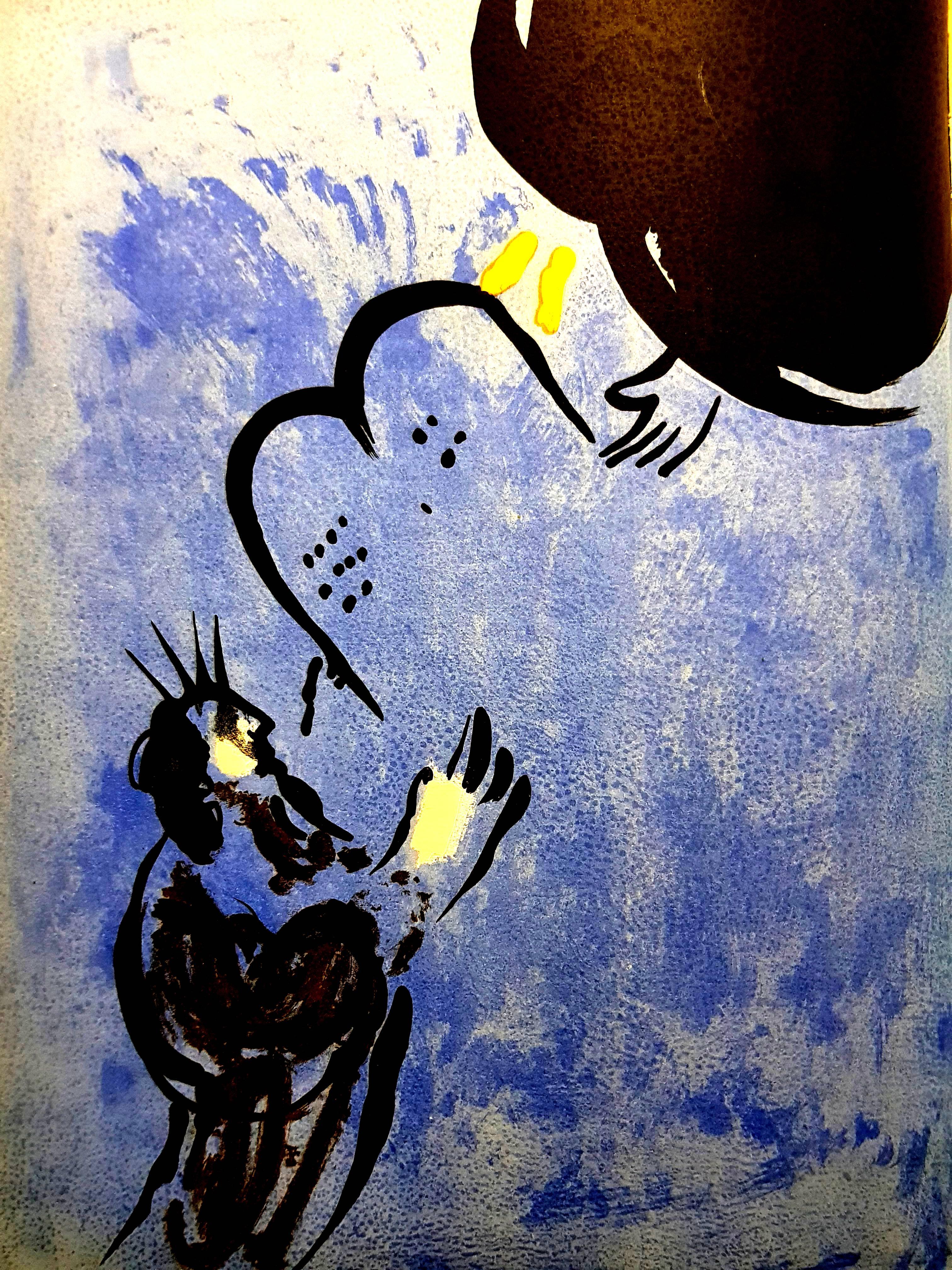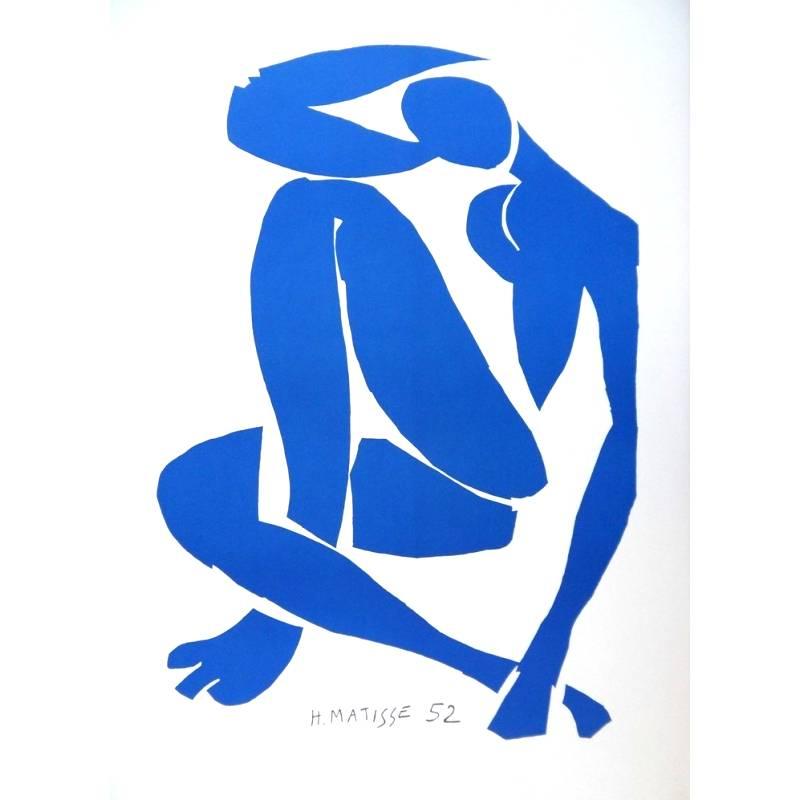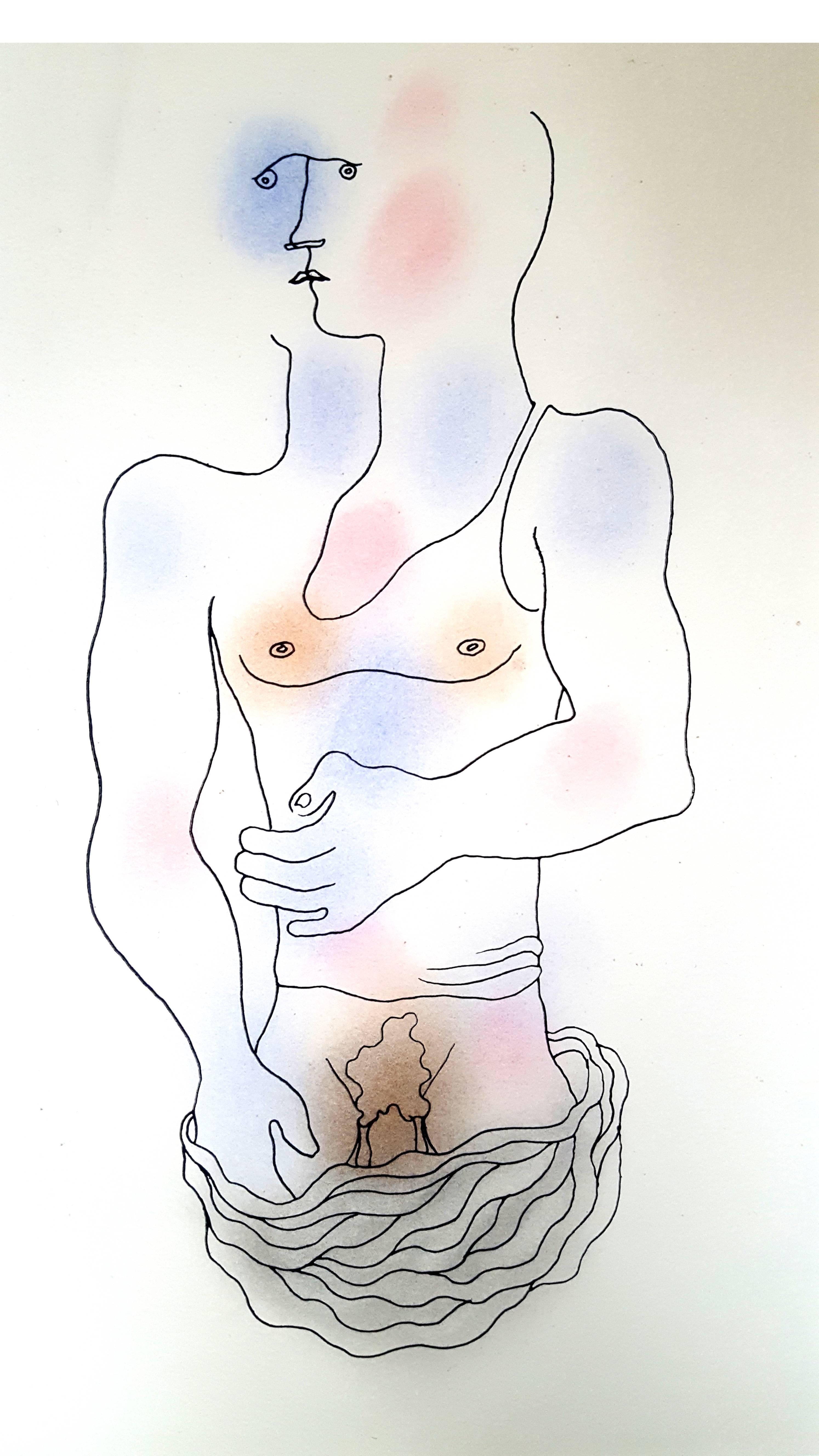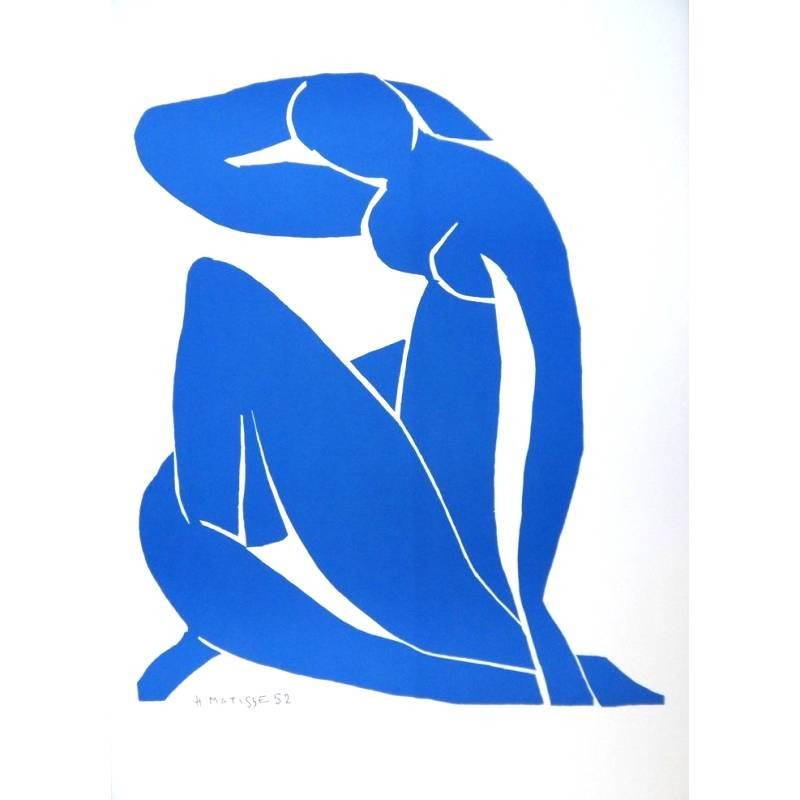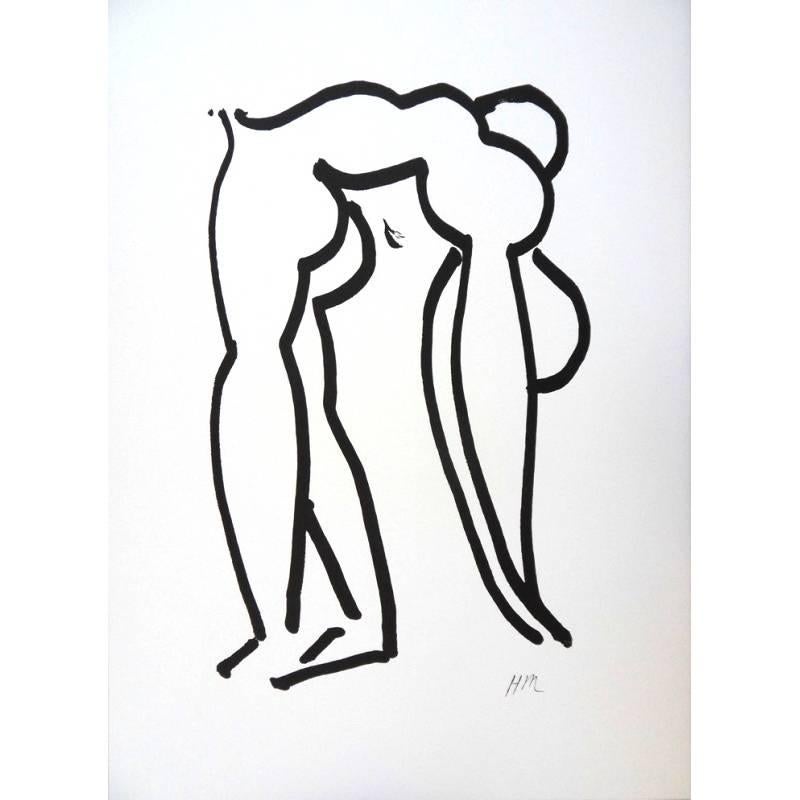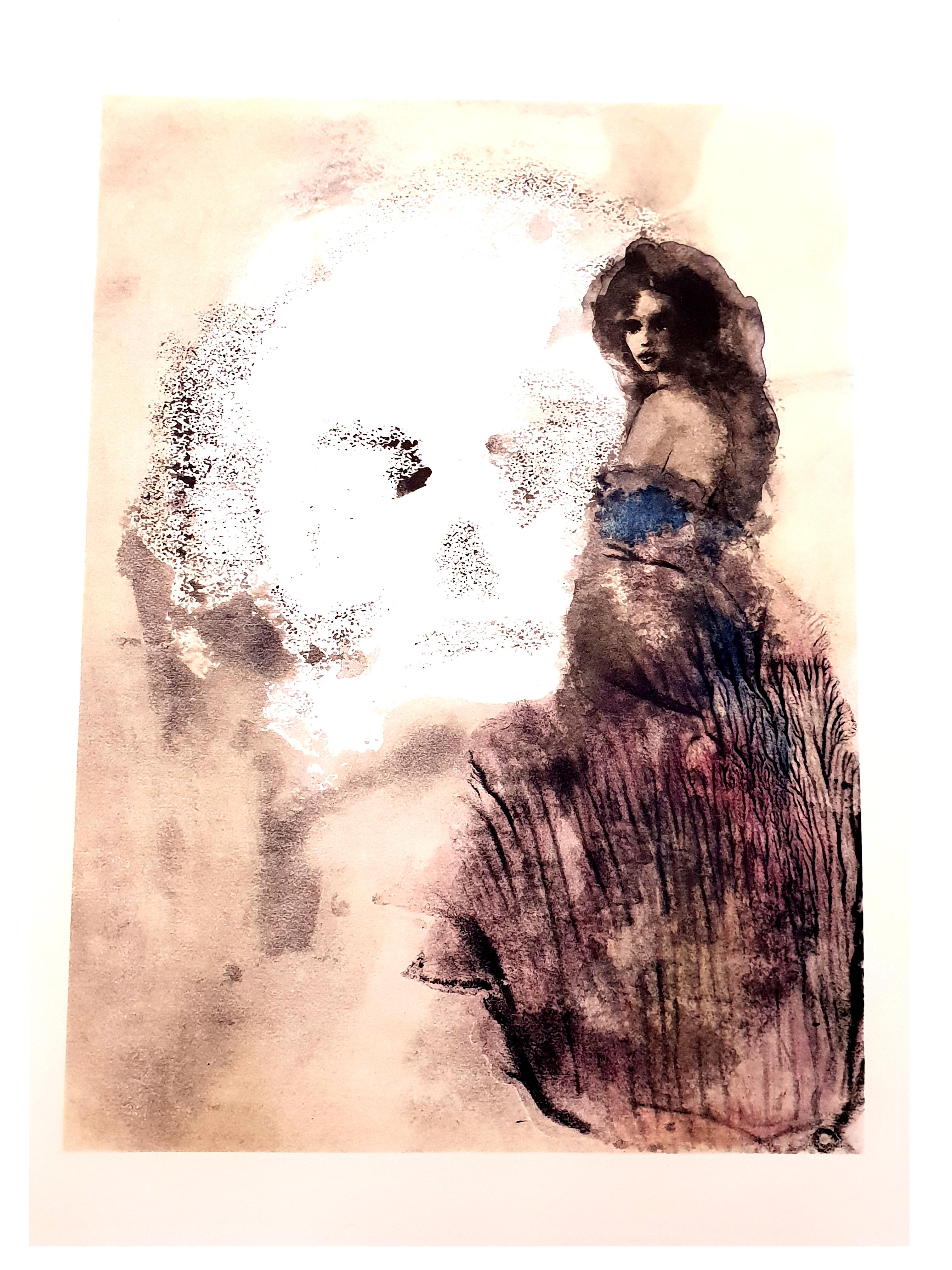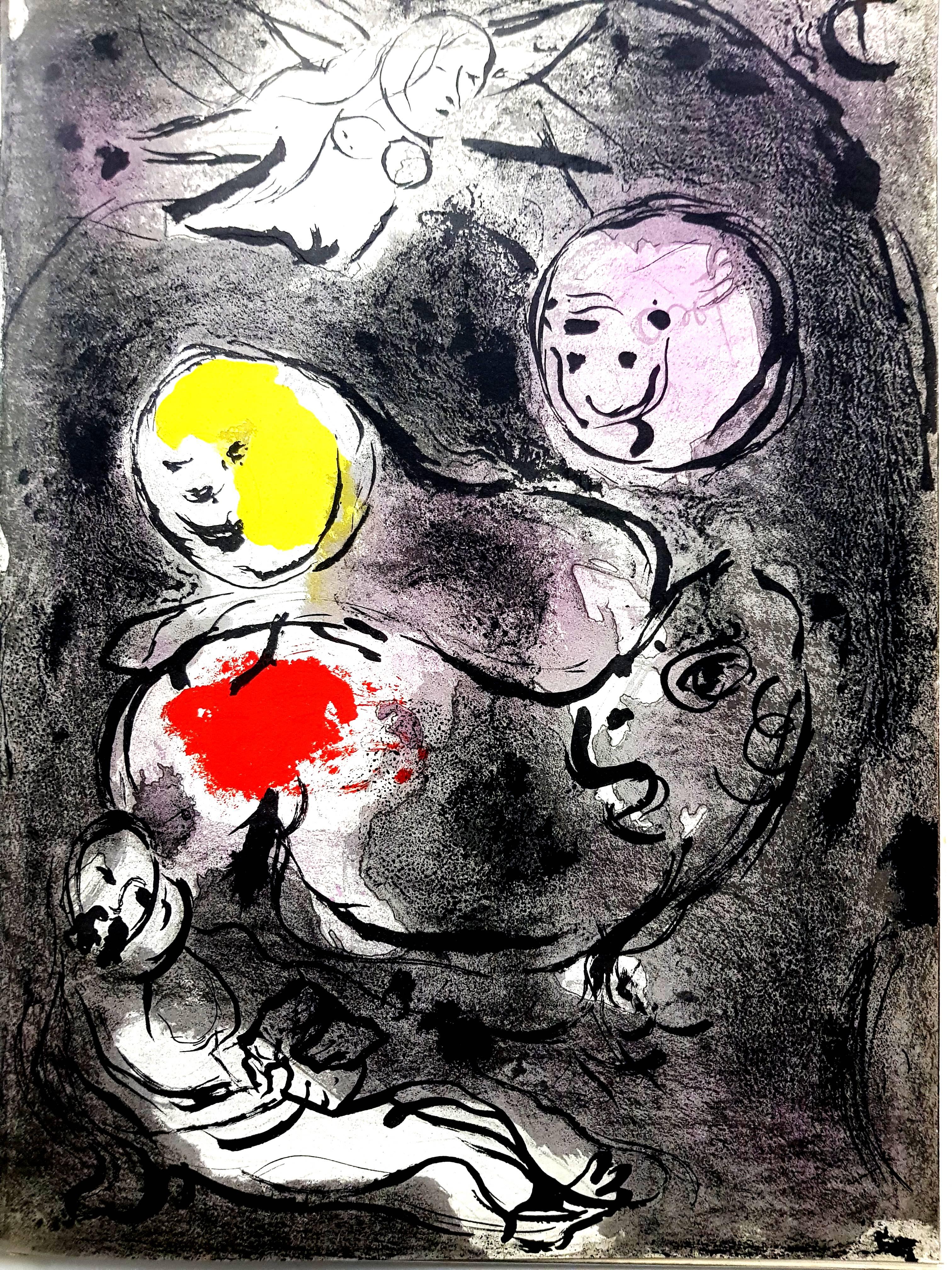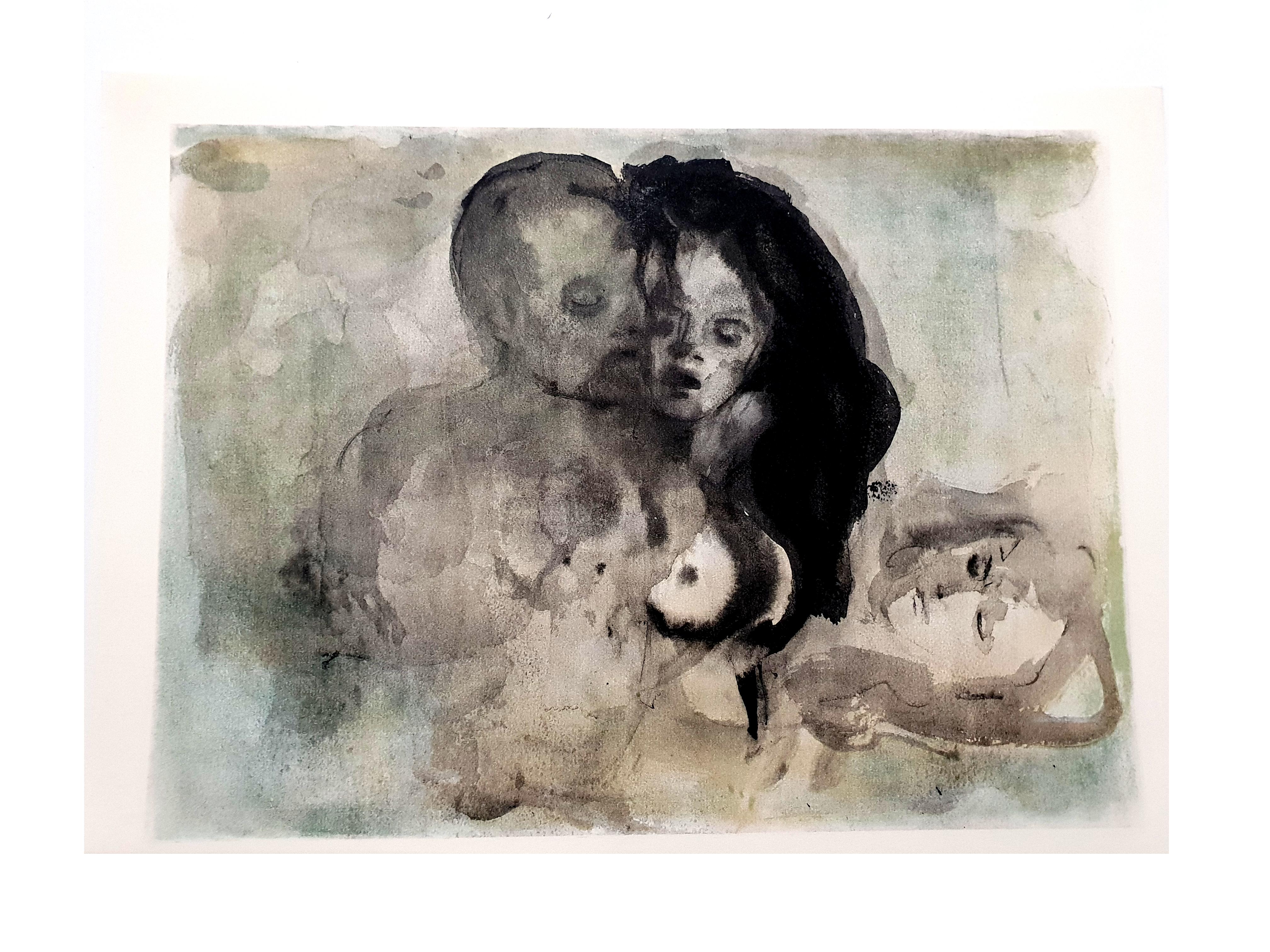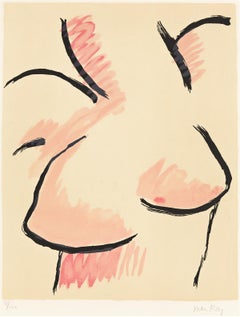Woman with Turkish Hat - Lithograph, Mourlot 1974
View Similar Items
Want more images or videos?
Request additional images or videos from the seller
1 of 12
(after) Pablo PicassoWoman with Turkish Hat - Lithograph, Mourlot 19741974
1974
About the Item
- Creator:(after) Pablo Picasso (1881 - 1973, Spanish)
- Creation Year:1974
- Dimensions:Height: 29.53 in (75 cm)Width: 20.48 in (52 cm)
- Medium:
- Movement & Style:
- Period:
- Condition:
- Gallery Location:Paris, FR
- Reference Number:1stDibs: LU46434825032
(after) Pablo Picasso
Pablo Picasso (1881 – 1973) was a Spanish painter, sculptor, printmaker, ceramicist, stage designer, poet and playwright who is regarded as one of the most influential artists of the 20th century. He is known for co-founding the Cubist movement, the invention of constructed sculpture, the co-invention of collage, and for the wide variety of styles that he helped develop and explore. Exceptionally prolific throughout the course of his long life, Picasso achieved universal renown and immense fortune for his revolutionary artistic accomplishments, and became one of the best-known figures in 20th-century art. The total number of artworks he produced has been estimated at around 50,000.
About the Seller
4.9
Platinum Seller
These expertly vetted sellers are 1stDibs' most experienced sellers and are rated highest by our customers.
Established in 2010
1stDibs seller since 2016
3,255 sales on 1stDibs
Typical response time: 1 hour
More From This SellerView All
- Seated Model - Original Signed LithographBy Antoniucci VoltiLocated in Paris, FRAntoniucci Volti (1915-1989) Seated Model Original lithograph Handsigned in pencil Numbered / 80 copies On Arches vellum 65 x 50 cm (c. 26 x 20 in) Excellent conditionCategory
Early 20th Century Modern Nude Prints
MaterialsLithograph
- Three Reclining Nudes - Original lithographBy Henry MooreLocated in Paris, FRHenry MOORE Three reclining nudes, 1971 Original lithograph (Printed in Desjobert Workshop). On wove paper 31 x 24 cm (c. 12 x 10 in) Edited by San Lazarro, 1971 REFERENCES : Henry...Category
1970s Modern Nude Prints
MaterialsLithograph
- Treasure : Harlequine - Original handsigned lithograph - 199exBy Jean-Baptiste ValadieLocated in Paris, FRJean-Baptiste VALADIE Treasure : Harlequine Original lithograph Handsigned in pencil Limited /199 copies On vellum 71 x 55 cm (c. 28 x 22 in) Excellent conditionCategory
Late 20th Century Modern Nude Prints
MaterialsLithograph
- Woman Eating Cherries - Original handsigned lithograph - Ltd 250By Jean-Baptiste ValadieLocated in Paris, FRJean-Baptiste VALADIE Woman Eating Cherries Original lithograph Handsigned in pencil Limited /250 copies On vellum 35 x 45 cm (c. 14 x 18 in) Excellent conditionCategory
Late 20th Century Modern Nude Prints
MaterialsLithograph
- The Bathers in Provence - Lithograph, 1971By Paul CézanneLocated in Paris, FRPaul Cezanne The Bathers in Provence, 1971 Lithograph and stencil (Jacomet workshop) Unsigned Numbered / 225 On paper applied on Arches vellum 53.5 x 41.5 cm (c. 21 x 16.5 in) Image...Category
1970s Modern Nude Prints
MaterialsLithograph, Stencil
- Bathers - Lithograph, 1971By Paul CézanneLocated in Paris, FRPaul Cezanne Bathers, 1971 Lithograph and stencil (Jacomet workshop) Unsigned Numbered / 225 On paper applied on Arches vellum 53.5 x 41.5 cm (c. 21 x 16.5 in) Image size : 13 x 26 ...Category
1970s Modern Nude Prints
MaterialsStencil, Lithograph
You May Also Like
- De l'Origine des Espèces par Voie de Sélection Irrationelle: Buste de femmeBy Man RayLocated in New York, NYA very good impression of this color lithograph. Signed and numbered 51/180 in pencil. Printed by Mourlot, Paris. Published by Leon Amiel, New York, and XXe Siècle, Paris. From the s...Category
1970s Modern Abstract Prints
MaterialsColor, Lithograph
- “Standing Female Nude”By Aristide MaillolLocated in Southampton, NYBeautiful, original lithograph on handmade paper by the well known French artist, Aristide Maillol. Artist monogram “M” lower right. Condition is good. Early 20th century on artist...Category
Early 20th Century Modern Nude Prints
MaterialsHandmade Paper, Lithograph
$1,000 Sale Price20% Off - Marc Chagall - Moses with Tablets of Stone - Original LithographBy Marc ChagallLocated in Collonge Bellerive, Geneve, CHMarc Chagall, Original Lithograph depicting an instant of the Bible. Technique: Original lithograph in colours Year: 1956 Sizes: 35,5 x 26 cm / 14" x 10.2" (sheet) Published by: Éditions de la Revue Verve, Tériade, Paris Printed by: Atelier Mourlot, Paris Documentation / References: Mourlot, F., Chagall Lithograph [II] 1957-1962, A. Sauret, Monte Carlo 1963, nos. 234 and 257 Marc Chagall (born in 1887) Marc Chagall was born in Belarus in 1887 and developed an early interest in art. After studying painting, in 1907 he left Russia for Paris, where he lived in an artist colony on the city’s outskirts. Fusing his own personal, dreamlike imagery with hints of the fauvism and cubism popular in France at the time, Chagall created his most lasting work—including I and the Village (1911)—some of which would be featured in the Salon des Indépendants exhibitions. After returning to Vitebsk for a visit in 1914, the outbreak of WWI trapped Chagall in Russia. He returned to France in 1923 but was forced to flee the country and Nazi persecution during WWII. Finding asylum in the U.S., Chagall became involved in set and costume design before returning to France in 1948. In his later years, he experimented with new art forms and was commissioned to produce numerous large-scale works. Chagall died in St.-Paul-de-Vence in 1985. The Village Marc Chagall was born in a small Hassidic community on the outskirts of Vitebsk, Belarus, on July 7, 1887. His father was a fishmonger, and his mother ran a small sundries shop in the village. As a child, Chagall attended the Jewish elementary school, where he studied Hebrew and the Bible, before later attending the Russian public school. He began to learn the fundamentals of drawing during this time, but perhaps more importantly, he absorbed the world around him, storing away the imagery and themes that would feature largely in most of his later work. At age 19 Chagall enrolled at a private, all-Jewish art school and began his formal education in painting, studying briefly with portrait artist Yehuda Pen. However, he left the school after several months, moving to St. Petersburg in 1907 to study at the Imperial Society for the Protection of Fine Arts. The following year, he enrolled at the Svanseva School, studying with set designer Léon Bakst, whose work had been featured in Sergei Diaghilev's Ballets Russes. This early experience would prove important to Chagall’s later career as well. Despite this formal instruction, and the widespread popularity of realism in Russia at the time, Chagall was already establishing his own personal style, which featured a more dreamlike unreality and the people, places and imagery that were close to his heart. Some examples from this period are his Window Vitebsk (1908) and My Fianceé with Black Gloves (1909), which pictured Bella Rosenfeld, to whom he had recently become engaged. The Beehive Despite his romance with Bella, in 1911 an allowance from Russian parliament member and art patron Maxim Binaver enabled Chagall to move to Paris, France. After settling briefly in the Montparnasse neighborhood, Chagall moved further afield to an artist colony known as La Ruche (“The Beehive”), where he began to work side by side with abstract painters such as Amedeo Modigliani and Fernand Léger as well as the avant-garde poet Guillaume Apollinaire. At their urging, and under the influence of the wildly popular fauvism and cubism, Chagall lightened his palette and pushed his style ever further from reality. I and the Village (1911) and Homage to Apollinaire (1912) are among his early Parisian works, widely considered to be his most successful and representative period. Though his work stood stylistically apart from his cubist contemporaries, from 1912 to 1914 Chagall exhibited several paintings at the annual Salon des Indépendants exhibition, where works by the likes of Juan Gris, Marcel Duchamp and Robert Delaunay were causing a stir in the Paris art world. Chagall’s popularity began to spread beyond La Ruche, and in May 1914 he traveled to Berlin to help organize his first solo exhibition, at Der Sturm Gallery. Chagall remained in the city until the highly acclaimed show opened that June. He then returned to Vitebsk, unaware of the fateful events to come. War, Peace and Revolution In August 1914 the outbreak of World War I precluded Chagall’s plans to return to Paris. The conflict did little to stem the flow of his creative output, however, instead merely giving him direct access to the childhood scenes so essential to his work, as seen in paintings such as Jew in Green (1914) and Over Vitebsk (1914). His paintings from this period also occasionally featured images of the war’s impact on the region, as with Wounded Soldier (1914) and Marching (1915). But despite the hardships of life during wartime, this would also prove to be a joyful period for Chagall. In July 1915 he married Bella, and she gave birth to a daughter, Ida, the following year. Their appearance in works such as Birthday (1915), Bella and Ida by the Window (1917) and several of his “Lovers” paintings give a glimpse of the island of domestic bliss that was Chagall’s amidst the chaos. To avoid military service and stay with his new family, Chagall took a position as a clerk in the Ministry of War Economy in St. Petersburg. While there he began work on his autobiography and also immersed himself in the local art scene, befriending novelist Boris Pasternak, among others. He also exhibited his work in the city and soon gained considerable recognition. That notoriety would prove important in the aftermath of the 1917 Russian Revolution when he was appointed as the Commissar of Fine Arts in Vitebsk. In his new post, Chagall undertook various projects in the region, including the 1919 founding of the Academy of the Arts. Despite these endeavors, differences among his colleagues eventually disillusioned Chagall. In 1920 he relinquished his position and moved his family to Moscow, the post-revolution capital of Russia. In Moscow, Chagall was soon commissioned to create sets and costumes for various productions at the Moscow State Yiddish...Category
1950s Modern Figurative Prints
MaterialsLithograph
- Marc Chagall - Moses - Original LithographBy Marc ChagallLocated in Collonge Bellerive, Geneve, CHMarc Chagall, Original Lithograph depicting an instant of the Bible. Technique: Original lithograph in colours Year: 1956 Sizes: 35,5 x 26 cm / 14" x 10.2" (sheet) Published by: Éditions de la Revue Verve, Tériade, Paris Printed by: Atelier Mourlot, Paris Documentation / References: Mourlot, F., Chagall Lithograph [II] 1957-1962, A. Sauret, Monte Carlo 1963, nos. 234 and 257 Marc Chagall (born in 1887) Marc Chagall was born in Belarus in 1887 and developed an early interest in art. After studying painting, in 1907 he left Russia for Paris, where he lived in an artist colony on the city’s outskirts. Fusing his own personal, dreamlike imagery with hints of the fauvism and cubism popular in France at the time, Chagall created his most lasting work—including I and the Village (1911)—some of which would be featured in the Salon des Indépendants exhibitions. After returning to Vitebsk for a visit in 1914, the outbreak of WWI trapped Chagall in Russia. He returned to France in 1923 but was forced to flee the country and Nazi persecution during WWII. Finding asylum in the U.S., Chagall became involved in set and costume design before returning to France in 1948. In his later years, he experimented with new art forms and was commissioned to produce numerous large-scale works. Chagall died in St.-Paul-de-Vence in 1985. The Village Marc Chagall was born in a small Hassidic community on the outskirts of Vitebsk, Belarus, on July 7, 1887. His father was a fishmonger, and his mother ran a small sundries shop in the village. As a child, Chagall attended the Jewish elementary school, where he studied Hebrew and the Bible, before later attending the Russian public school. He began to learn the fundamentals of drawing during this time, but perhaps more importantly, he absorbed the world around him, storing away the imagery and themes that would feature largely in most of his later work. At age 19 Chagall enrolled at a private, all-Jewish art school and began his formal education in painting, studying briefly with portrait artist Yehuda Pen. However, he left the school after several months, moving to St. Petersburg in 1907 to study at the Imperial Society for the Protection of Fine Arts. The following year, he enrolled at the Svanseva School, studying with set designer Léon Bakst, whose work had been featured in Sergei Diaghilev's Ballets Russes. This early experience would prove important to Chagall’s later career as well. Despite this formal instruction, and the widespread popularity of realism in Russia at the time, Chagall was already establishing his own personal style, which featured a more dreamlike unreality and the people, places and imagery that were close to his heart. Some examples from this period are his Window Vitebsk (1908) and My Fianceé with Black Gloves (1909), which pictured Bella Rosenfeld, to whom he had recently become engaged. The Beehive Despite his romance with Bella, in 1911 an allowance from Russian parliament member and art patron Maxim Binaver enabled Chagall to move to Paris, France. After settling briefly in the Montparnasse neighborhood, Chagall moved further afield to an artist colony known as La Ruche (“The Beehive”), where he began to work side by side with abstract painters such as Amedeo Modigliani and Fernand Léger as well as the avant-garde poet Guillaume Apollinaire. At their urging, and under the influence of the wildly popular fauvism and cubism, Chagall lightened his palette and pushed his style ever further from reality. I and the Village (1911) and Homage to Apollinaire (1912) are among his early Parisian works, widely considered to be his most successful and representative period. Though his work stood stylistically apart from his cubist contemporaries, from 1912 to 1914 Chagall exhibited several paintings at the annual Salon des Indépendants exhibition, where works by the likes of Juan Gris, Marcel Duchamp and Robert Delaunay were causing a stir in the Paris art world. Chagall’s popularity began to spread beyond La Ruche, and in May 1914 he traveled to Berlin to help organize his first solo exhibition, at Der Sturm Gallery. Chagall remained in the city until the highly acclaimed show opened that June. He then returned to Vitebsk, unaware of the fateful events to come. War, Peace and Revolution In August 1914 the outbreak of World War I precluded Chagall’s plans to return to Paris. The conflict did little to stem the flow of his creative output, however, instead merely giving him direct access to the childhood scenes so essential to his work, as seen in paintings such as Jew in Green (1914) and Over Vitebsk (1914). His paintings from this period also occasionally featured images of the war’s impact on the region, as with Wounded Soldier (1914) and Marching (1915). But despite the hardships of life during wartime, this would also prove to be a joyful period for Chagall. In July 1915 he married Bella, and she gave birth to a daughter, Ida, the following year. Their appearance in works such as Birthday (1915), Bella and Ida by the Window (1917) and several of his “Lovers” paintings give a glimpse of the island of domestic bliss that was Chagall’s amidst the chaos. To avoid military service and stay with his new family, Chagall took a position as a clerk in the Ministry of War Economy in St. Petersburg. While there he began work on his autobiography and also immersed himself in the local art scene, befriending novelist Boris Pasternak, among others. He also exhibited his work in the city and soon gained considerable recognition. That notoriety would prove important in the aftermath of the 1917 Russian Revolution when he was appointed as the Commissar of Fine Arts in Vitebsk. In his new post, Chagall undertook various projects in the region, including the 1919 founding of the Academy of the Arts. Despite these endeavors, differences among his colleagues eventually disillusioned Chagall. In 1920 he relinquished his position and moved his family to Moscow, the post-revolution capital of Russia. In Moscow, Chagall was soon commissioned to create sets and costumes for various productions at the Moscow State Yiddish...Category
1950s Modern Figurative Prints
MaterialsLithograph
- after Henri Matisse, "Sitting Blue Nude"By Henri MatisseLocated in Collonge Bellerive, Geneve, CHLithograph after Henri Matisse - Sitting Blue Nude Artist : after Henri MATISSE Edition of 200 76 x 56 cm With stamp of the Succession Matisse References : Artvalue - Succession Ma...Category
1950s Modern Nude Prints
MaterialsLithograph
- Jean Cocteau - White Book - Original Handcolored LithographBy Jean CocteauLocated in Collonge Bellerive, Geneve, CHJean Cocteau White Book - Autobiography about Cocteau's discovery of his homosexuality. The book was first published anonymously and created a scandal. Original Handcolored Lithograph...Category
1930s Modern Nude Prints
MaterialsLithograph
Recently Viewed
View AllMore Ways To Browse
Picasso Lithograph 1974
Turkey Plates Vintage
Picasso Woman With Hat
Henri Deschamps
Retro Turkey Plates
Joseph Felon On Sale
Jim Jonson On Sale
Citizen 2 Tone Mens Watch
Miguel Angel Reyes On Sale
Pierre Sernet Kaitlin And John
Mel Crawford
Robe De Chambre Vintage Femme
A Gold Book
Simple Wall Art
Blue Books
Forties Vintage
Richard Gray
Contemporary Abstract Sculpture Wood


